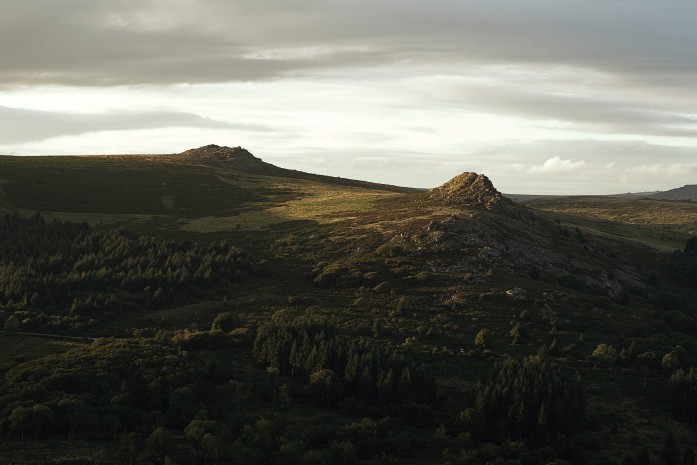Covering 368 square miles of purple heather-smothered tors, deep gorges and miles upon miles of exposed honey-hued land, Dartmoor is Devonís beating untamed heart. It can be a shock to the system at first, but beyond the barren hummocks and ancient granite summits, South West Englandís largest expanse of wilderness hides a treasure trove of lush valleys, mystic woodlands and secret wild-swimming pools hidden beneath the watchful eye of electric blue dragonflies. When the sun is shining, this National Park is a dream escape of views and walks, with friendly chats with the resident ponies, but all too soon the mist rolls in as fast as galloping stallions and itís easy to see how this bleak landscape was the inspiration behind Sir Arthur Conan Doyleís The Hound of the Baskervilles.
Desolate, isolated but starkly beautiful, Dartmoor is captivating and addictive, and will pull you back to its chiselled hills again and again.
North Dartmoor
Steep valleys, impenetrable bogs and soaring ridges so often tinged with frost, northern Dartmoor walks on the wilder side of life. Clamber to the South Westís highest point on High Willhays, ramble the leafy shores of the River Teign and go in search of the Devilís Cauldron at Lydford Gorge. Waterfalls, gnarled forests and weathered tors scraping the clouds; this seldom-visited corner of Dartmoor is worth the windy, narrow roads and unpredictable weather.

Where to stay: Sojourn
South Dartmoor
Barren, rolling hills dotted with nothing but crooked Hawthorne trees and stone circles gently morph into dense forest alive with a cacophony of birdsong in Dartmoorís southern regions. Roam peacefully along the shaded banks of the River Dart, look out over Plymouth Sound and the watery horizon from the lofty heights of the Two Moors Way and hide away from raging winds by roaring fires in cosy, long-lost thatched inns.

Where to stay: Peacock Blue
East Dartmoor
Iconic hunks of rock dominate the horizon in east Dartmoor, where yawning canyons hide remote villages so deep, not even the faintest of phone signal can reach. †Enormous Haytor, the National Parkís most famous tor, stands a head and shoulders above the South Hams while gentle, rolling hillocks of sunshine yellow, coconut scented gorse flowers reach for the blue, blue sky.

Where to stay: Wrey Mist, The Riddle





